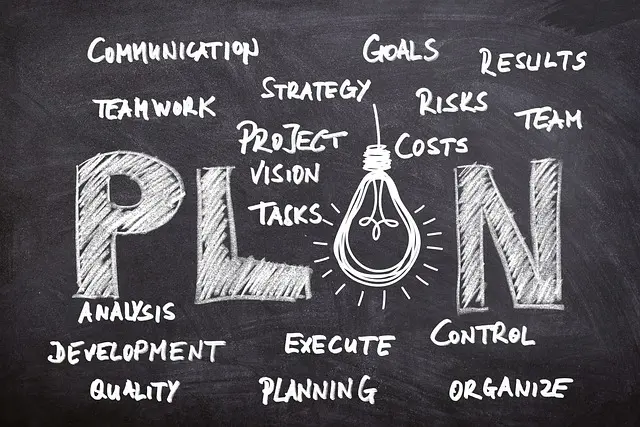
What is STEM?
STEM, an acronym for Science, Technology, Engineering, and Mathematics, encompasses a broad range of disciplines that are vital for addressing today’s complex global challenges. These fields intersect and interact, forming the foundation for innovation, problem-solving, and discovery. Science seeks to understand the natural world through observation and experimentation, while technology focuses on developing tools and systems to enhance human capabilities. Engineering applies scientific principles to design and build solutions that solve real-world problems, while mathematics provides the language and framework for modeling and understanding patterns, relationships, and data. Together, these disciplines form the backbone of STEM education, fostering critical thinking, creativity, and analytical skills necessary for a rapidly evolving technological society.
Within the STEM framework, each discipline plays a unique role in shaping our understanding of the world and driving progress in various sectors. Science contributes to a deeper understanding of natural phenomena, uncovering the mysteries of the universe through empirical research and data analysis. It offers insights into how life functions, how matter behaves, and how the physical universe operates. Technology harnesses scientific knowledge to develop advanced tools, technologies, and infrastructure, improving efficiency, communication, and connectivity. From computers and software to medical devices and renewable energy systems, technology pushes the boundaries of what is possible. Engineering, on the other hand, involves the practical application of scientific and mathematical principles to design, create, and innovate solutions to real-world problems. Bridges, buildings, transportation systems, and even space shuttles are all products of engineering expertise. Mathematics, as the language of science and engineering, provides the foundation for understanding and predicting the world around us by using logic, patterns, and quantitative reasoning.
Together, these four STEM disciplines form a comprehensive framework for understanding, exploring, and advancing human knowledge and abilities. From medicine and environmental conservation to space exploration and digital innovation, STEM plays a crucial role in shaping not only our present but also our future. By nurturing an interdisciplinary approach, STEM education equips individuals with the tools and skills necessary to navigate the complexities of our rapidly changing world. From a young age, fostering an interest and aptitude in STEM subjects can unlock a world of opportunity, empowering individuals to become problem-solvers, innovators, and contributors to the betterment of society. As technology continues to reshape our lives, the importance of STEM education becomes increasingly evident, driving the need for a workforce equipped with the knowledge and skills to thrive in the modern world.
Defining coding
The concept of coding refers to the process of using specific instructions or commands to create computer programs or software. It involves writing lines of code in programming languages such as Python, Java, or C++ to give computers the ability to execute certain actions or tasks. Coding essentially allows developers to communicate with computers and tell them what to do.
Coding involves a set of rules and syntax that programmers must follow to ensure that their code is written correctly and can be understood by the computer. This process requires logical thinking and problem-solving skills, as programmers need to break down complex problems into smaller, manageable steps that can be translated into code. Additionally, coding often involves testing and debugging to identify and fix any errors or bugs in the code. Overall, coding is an integral part of computer science and technology, and it plays a crucial role in various aspects of STEM education and careers.
The relationship between coding and STEM
Coding is an integral part of STEM education as it provides a practical application of scientific and mathematical concepts. STEM (Science, Technology, Engineering, and Mathematics) fields heavily rely on coding to develop innovative solutions and advancements. The relationship between coding and STEM lies in their mutual influence on each other. Coding relies on STEM principles such as logical thinking, problem-solving, and algorithmic reasoning. Conversely, coding enhances STEM learning by creating opportunities for students to apply their knowledge in real-world scenarios.
In STEM education, coding serves as a bridge between theoretical concepts and practical implementation. It enables students to translate abstract scientific and mathematical ideas into tangible outcomes through the creation of programs, applications, and other technological innovations. This process not only facilitates a deeper understanding of STEM disciplines but also fosters critical thinking and creativity. Through coding, students can explore different possibilities, experiment with new ideas, and develop their problem-solving skills. The relationship between coding and STEM is symbiotic, with coding providing the tools and frameworks necessary for STEM advancement, while STEM concepts provide the foundation for coding development.
The importance of coding in STEM education
Coding plays a crucial role in STEM education, providing students with the opportunity to develop valuable skills that are applicable to a range of fields and industries. One of the key reasons why coding is important in STEM education is that it cultivates critical thinking and problem-solving abilities. Through coding, students learn how to break down complex problems into smaller, manageable tasks and develop logical solutions. This process fosters analytical thinking and encourages students to think creatively in order to find innovative solutions to challenges they may encounter.
Furthermore, coding helps students develop computational thinking skills, which are essential in the digital age. Computational thinking involves understanding how to solve problems by designing and implementing algorithms, and it is a foundational skill for success in STEM disciplines. By learning how to code, students gain a deeper understanding of problem-solving processes and develop the ability to analyze, organize, and evaluate information systematically. These skills can be applied to various scientific and technological scenarios, allowing students to approach challenges in a structured and efficient manner.
Coding as a foundational skill in STEM fields
Coding is regarded as a foundational skill in STEM fields. STEM, which stands for science, technology, engineering, and mathematics, encompasses various disciplines that rely on coding for problem-solving and innovation. In today’s digital age, coding has become an essential tool for scientists, engineers, and mathematicians to analyze, model, and simulate complex phenomena. Moreover, coding allows STEM professionals to create software solutions, design algorithms, and develop computational models to aid in their research and experimental endeavors. Through coding, they can automate data analysis, visualize data sets, and make predictions based on mathematical models, thereby pushing the boundaries of scientific knowledge and advancing technological innovations.
Furthermore, coding serves as the cornerstone of modern-day technological advancements in STEM fields. Whether it’s developing sophisticated machines, designing intricate virtual reality experiences, or programming smart devices, coding is at the heart of these groundbreaking innovations. From autonomous vehicles to artificial intelligence, coding forms the foundation upon which these technological marvels are built. The ability to code not only opens doors to various career opportunities in STEM but also empowers individuals to contribute to the development of cutting-edge technologies that shape our world. With coding as a foundational skill, aspiring STEM professionals can navigate the ever-evolving landscape of technology and make significant contributions to their respective fields.
Coding as a problem-solving tool in STEM disciplines
Coding plays a crucial role as a problem-solving tool in various STEM disciplines. By utilizing coding languages and algorithms, scientists, engineers, and researchers can efficiently analyze complex problems and develop innovative solutions. Whether it is designing a new software program, creating algorithms to process large data sets, or simulating intricate models, coding allows professionals in STEM fields to break down complex problems into smaller, more manageable tasks.
In the field of computer science, coding is used to tackle challenging problems such as developing efficient algorithms for artificial intelligence, designing cybersecurity protocols to protect against cyber threats, or creating complex simulations for virtual reality applications. Through coding, computer scientists can apply logical thinking and analytical skills to develop creative and innovative solutions for real-world challenges. Moreover, coding enables scientists and engineers to test hypotheses, conduct experiments, and gather data for empirical research, fostering a more rigorous and evidence-based approach in STEM disciplines.
The role of coding in scientific research and experimentation
Scientific research and experimentation have always been the cornerstone of progress and innovation in various fields. In today’s digital age, coding plays a significant role in enhancing the efficiency and accuracy of these processes. With the ability to manipulate and analyze vast amounts of data, coding enables scientists and researchers to uncover patterns, make predictions, and draw meaningful conclusions. By leveraging programming languages such as Python or R, they can develop sophisticated algorithms and models to simulate complex phenomena, aiding in the understanding of intricate systems and pushing the boundaries of scientific knowledge.
Moreover, coding serves as a powerful tool for automating repetitive tasks and streamlining data collection and analysis. Through the development of custom-made software or applications, researchers can automate data collection processes, eliminating human error and saving substantial time and effort. Subsequently, they can focus more on the critical aspects of the research, such as designing experiments, interpreting results, and formulating hypotheses. By harnessing the potential of coding in scientific research and experimentation, scientists are able to accelerate the pace of discovery and drive breakthroughs in various fields, ranging from medicine and genetics to climate science and astronomy.
Coding in engineering and technological innovations
Engineers and technological innovators rely heavily on coding to drive advancements in their respective fields. By utilizing programming languages such as Python, C++, and Java, engineers are able to develop software and hardware systems that power a wide range of applications. These applications include everything from designing and building complex structures like bridges and skyscrapers to creating innovative technologies like self-driving cars and artificial intelligence algorithms. Coding plays a crucial role in engineering and technological innovations, enabling professionals to translate their ideas and concepts into tangible products and solutions. Additionally, coding enhances efficiency in these fields by automating processes and enabling precise control over intricate systems.
In engineering, coding is instrumental in the development of computer-aided design (CAD) software, which allows engineers to create accurate and detailed models of structures and machines. This software enables engineers to simulate and analyze the behavior of their designs, identifying potential flaws or improvements before any physical constructions take place. Moreover, coding facilitates the integration of sensors and actuators into engineering systems, enabling precise control and automation. With coding expertise, engineers can optimize and fine-tune the performance of these systems, resulting in increased safety, efficiency, and functionality. As technology continues to advance, coding will remain a cornerstone of engineering and technological innovations, driving progress and pushing boundaries.
The influence of coding on mathematical and logical thinking in STEM
Mathematical and logical thinking are fundamental skills in the STEM fields, enabling individuals to analyze complex problems and develop systematic solutions. Coding, as a language of algorithms and operations, plays a significant role in shaping and enhancing these skills in STEM education. By engaging in coding activities, students are exposed to a range of mathematical and logical concepts, such as problem decomposition, pattern recognition, and sequential reasoning. Through coding, learners gain a deeper understanding of how mathematical and logical principles apply to real-world scenarios, allowing them to develop creative strategies for problem-solving.
Moreover, coding provides a platform for students to practice critical thinking and logical reasoning in a hands-on manner. As they write code to achieve specific objectives, individuals are required to break down complex problems into smaller, manageable parts, and then organize these parts in a logical sequence. This process fosters a structured approach to problem-solving and trains students to think analytically. In addition, the iterative nature of coding necessitates troubleshooting and debugging, encouraging students to identify and rectify errors using logical deduction and trial-and-error techniques. These experiences not only strengthen mathematical and logical thinking skills but also cultivate perseverance and persistence in the face of challenges – traits essential for success in STEM disciplines.
Coding and career opportunities in STEM fields
Coding skills have become increasingly relevant and sought after in the field of STEM (Science, Technology, Engineering, and Mathematics). As technology continues to advance and play a crucial role in various industries, professionals with coding expertise are in high demand. Whether it is developing software applications, analyzing complex data sets, or designing cutting-edge technological solutions, coding opens up a diverse range of career opportunities across STEM fields.
Proficiency in coding provides individuals with a competitive edge for securing rewarding positions in fields such as computer science, data analysis, artificial intelligence, and software engineering. With the rapid growth of the tech industry, companies are actively seeking candidates who can effectively code and develop innovative solutions. Additionally, coding skills can also open doors to opportunities in research and academia, where professionals can leverage their coding abilities to conduct experiments, analyze data, and model complex systems. In a world driven by technology, coding proficiency not only expands career prospects but also empowers individuals to contribute meaningfully to the advancement of STEM fields.












